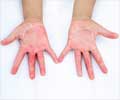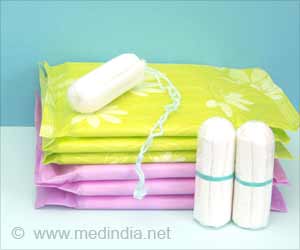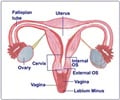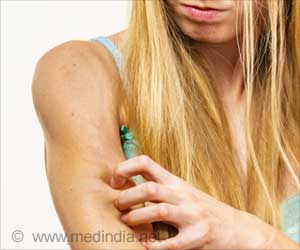Menstrual cup, a feminine hygiene device that is inserted into the vagina during periods, can be used as an alternative to sanitary pads or tampons. Menstrual cups are safe, effective, reusable, eco-friendly and cost-effective.
- Menstrual cup is a bell-shaped feminine hygiene device that is inserted into the vagina during periods to collect and dispose blood flow
- Menstrual cups are safe, effective, reusable, //cost-saving and eco-friendly alternative to sanitary pads or tampons
- Menstrual cups made with medical-grade silicone, rubber or latex and can last up to 10 years
Read More..
What are Menstrual Cups?
Menstrual cup is a feminine hygiene device that is inserted into the vagina during periods. Menstrual cups collect blood flow, rather than absorbing it as with pads and tampons. Like tampons, they are inserted into the vagina, before being emptied every 4-12 hours. There are currently two types: a vaginal cup which is generally bell-shaped, and a cervical cup which is placed around the cervix high in the vagina like a diaphragm for contraception. The materials used to make them are medical-grade silicone, rubber, latex or elastomer and can last up to 10 years.Menstrual cups, in the long run, are not only eco-friendly but also very cost-effective as they can be reused multiple times. However, a word of caution would be that there have been known instances where they have caused ‘toxic shock syndrome ’ if left inside the vagina and forgotten. Other problems like leakage of blood have not been significant compared to the use of tampons and pads.
Are Menstrual Cups Safe and Effective than Pads?
- Review indicates that menstrual cups are a safe option for menstruation management
- Around 70% of women wanted to continue using menstrual cups once they were familiar with how to use them, but practice, peer support, and training are key to initiation
- Although there are 199 brands of menstrual cup, and cups are available in 99 countries, awareness is low - cups were only mentioned in 21 of 69 websites containing educational materials on puberty from 27 countries
- Preliminary evidence on the cost and waste savings associated with using menstrual cups suggests that they could be beneficial
Do Menstrual Cups Prevent Leakage Problems?
The first systematic review and meta-analysis of the international use of menstrual cups, including 43 studies and data from 3,300 women and girls - published in The Lancet Public Health journal, suggests menstrual cups are safe and result in similar, or lower, leakage than disposable pads or tampons.Four studies within the review (293 participants) compared leakage between different sanitary products, and found that levels were similar between menstrual cups and pads and tampons, while one found that leakage was significantly less.
Globally, menstruation can affect girls' schooling and women's experience of work, increase their disposition to urogenital infections if they use poor quality sanitary products, and even make both women and girls a target of sexual violence or coercion when they don't have the funds to buy them. There are an increasing number of initiatives in both high- and low-income countries to combat 'period poverty,' so it is essential that policymakers know which sanitary products to include in menstrual health programs and puberty education materials.
"Despite the fact that 1.9 billion women globally are of menstruating age - spending on average 65 days a year dealing with menstrual blood flow, few good quality studies exist that compare sanitary products," says senior author Professor Penelope Phillips-Howard from the Liverpool School of Tropical Medicine, UK. "We aimed to address this by summarizing current knowledge about leakage, safety, and acceptability of menstrual cups, comparing them to other products where possible."
Details of the Study
The study combines data from medical studies and grey literature - such as conference abstracts, reports and theses - for which participants reported their experiences of menstrual cups or their willingness to use them. The authors selected 43 studies involving 3,319 participants in both low- and middle-income countries (LMICs) (15 studies) and high-income countries (28 studies). They also compiled global information on the availability and costs of menstrual cups, conducted preliminary estimates on waste savings, and examined puberty education materials to assess the extent to which menstrual cups are referred to as an option.The authors note that the quality of the studies included was low, and call for more, quality research in this area, and note that further studies are needed on cost-effectiveness and environmental effects between different menstrual products. In the review, some of the information was taken from reports not published in peer-reviewed journals, and the focus of some studies was to evaluate other topics. Some data were from older studies, when reporting requirements were less stringent, or with menstrual cups that are no longer available. Most of the studies depended on self-reporting, which might have overestimated the use of the menstrual cup.
The current review identifies the products usually used in LMICs, which include clothes, cotton wool, tissue paper, and other pieces of material, as well as disposable pads. Leakage and chaffing are a common concern.
Findings of the Study
Comparisons of Leakage Between Menstrual Cups & Disposable Pads or TamponsFour studies in the review, involving 293 participants, made direct comparisons of leakage between menstrual cups and disposable pads or tampons. Leakage was similar in three studies and significantly less among menstrual cups for one study.
In some studies, leaking was associated with abnormally heavy bleeding, unusual anatomy of the uterus, need of a larger cup size, incorrect placement of the cup, and the cup becoming full.
Do Menstrual Cups Cause Infections?
There was no increased risk of infection associated with using menstrual cups among European, North American, and African women and girls. There were five reported cases of toxic shock syndrome (a rare condition caused by bacterial toxins) following their use, but the overall number of menstrual cup users is unknown, so it is not possible to make comparisons of the risk of toxic shock syndrome (TSS) between menstrual cups and other products.In four studies involving a total of 507 women, use of the menstrual cup showed no adverse effects on vaginal flora. In studies that examined the vagina and cervix during follow-up, no tissue damage was identified from the use of a menstrual cup.
Difficulty in removing cups, requiring professional assistance, was reported twice for vaginal cups and 47 times for cervical cups. Some women use them in combination with intrauterine devices and, in 13 cases, removing the cup was associated with an IUD becoming dislodged. They suggest that the combination of an IUD and use of a menstrual cup might need further study.
The authors identified five women who reported pain, three who reported vaginal wounds, six who reported an allergy or rash and nine who reported urinary tract complaints.
Results from 13 of the studies suggest that around 70% of women wanted to continue using menstrual cups once they were familiar with how to do so. Interview-based studies revealed that practice, peer support, and training are key to participants finding them successful.
In six qualitative studies, participants suggested that adopting the menstrual cup required a familiarisation phase over several menstrual cycles. The authors note that information and follow-up on correct use might need to form a part of menstrual health programs.
Why Aren't Menstrual Cups More Popular?
The review suggests that awareness of menstrual cups as an option is low. Three studies in high-income countries found that only 11-33% of women are aware of them.Among 69 websites containing educational materials on puberty in 27 countries, 77% mentioned disposable pads, and 65% mentioned tampons, while only 30% mentioned menstrual cups and 22% mentioned reusable pads.
Menstrual Cups are Cost-effective and Eco-friendly Option
Preliminary evidence on the cost and waste savings associated with using menstrual cups suggests that over 10 years, a single menstrual cup could cost much less than pads or tampons. The authors identified 199 brands of cups being available in 99 countries, with a wide range of prices from US$ 0.72 to $46.72. A cup could cost roughly 5% or 7% of the cost of using 12 pads (on average US$ 0.31 each) or tampons (on average US$ 0.21 each) per period.Plastic waste might also be reduced. Over 10 years, a cup is estimated to create 0.4% of the plastic waste generated by single-use pads or 6% of that produced by using tampons. The authors note that the cost and waste estimates are only illustrative, and do not account for the combined use of menstrual products, inflation, or production costs.
Given the limited number of reports on the use of menstrual cups, the authors also caution that other potential issues cannot be excluded, including the use of menstrual cups in combination with IUDs. Further international research will be needed to provide more information on acceptability, to monitor adverse events, to assess best practice to shorten the familiarisation phase, and to more reliably assess cost-effectiveness and environmental effects.
Writing in a linked Comment, Dr. Julie Hennegan from the Johns Hopkins Bloomberg School of Public Health, USA, says: "For consumers purchasing menstrual products, the results highlight cups as a safe and cost-effective option. Critically, findings indicate that menstrual education resources are not providing a comprehensive overview of products to support informed choices. Authors found that awareness of menstrual cups was low, and that only 30% of websites with educational materials on menarche included information about menstrual cups."
Reference:
- Menstrual cup use, leakage, acceptability, safety, and availability: a systematic review and meta-analysis - (https://doi.org/10.1016/S2468-2667(19)30111-2)
Source-Eurekalert














